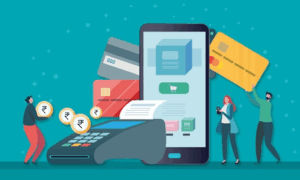As consumers are introduced to new technologies that change their lives for the better, these technologies become the new standard of convenience. Digital banking has become a basic requirement, as traditional banks have no option but to adapt to the changing digital landscape to remain competitive.
While most banks still focus on building customer-centric digital banking solutions to compete with modern fintech options, many other financial institutions have learned the value of allowing fintech companies to leverage their “banking-as-a-platform” (BAAP) options to partner in accessing new customers.
What is Digital Banking?
Digital banking — or the digitalization of traditional banking services — opens the door for financial institutions to evolve beyond the outdated branch model. Most millennials would already rather take a trip to the dentist than to the bank, and with fintech companies setting a new standard by delivering efficient on-demand banking services to consumers’ fingertips, many trends emerging in the digital banking space are here to stay.
So, what does the future of digital banking hold? The future of digital banking will see banking, payments and investments solutions merge into simple, secure and comprehensive apps. By providing access to solutions previously only available to the wealthy via their private bankers, digital banking services are creating full suites of financial services that are increasingly technology oriented. This could include everything from personalized account settings to AI banking assistants.
How the Rise of Fintech Drives the Digital Banking Evolution
Fintech companies create new products and solutions to meet the constantly changing demands of consumers by marrying technology to core banking functionalities. A good example of this is how money transfer apps like Venmo and Paypal showed consumers how easy it could be to send money with the click of a button. Once consumers saw how these apps improved their lives, simple digital money transfers became an expected and commonplace technology. The future of digital banking will bring financial technology tools to help us organize our financial well-being just as we use apps to organize things like our schedules and photos. Digital banking solutions must meet customers’ financial needs in a connected, seamless way while being structured around their goals and income.
For example, savings accounts should have subaccounts for each of our unique savings goals, whether the objective is a new mountain bike or a family vacation. Investment accounts should also be designed around goals like a down payment on a house or retirement. And much like private bankers, who help their clients access the best ways to borrow, spend and save their money based on their unique portfolio and needs, the future of digital banking will involve digital apps acting as a private banker for all.
This approach to the future of banking will bring instant visibility and direct access to loans, insurance, bill-payment tools and credit solutions that are prequalified and tailored to an individual’s unique situation.
Artificial intelligence and customized digital solutions could take it a step further and essentially eliminate the need for in-person banking altogether. With instant access to any customer’s financial information, AI-powered banking assistants would learn from and become “smarter” and more advanced with each interaction. This means that, in the near future, chatting with an AI banking assistant through an app could be like a conference call where each party can give you real-time answers about any banking or investing question.
Trends in Digital Banking
There are myriad trends emerging across the digital banking space. For example, security is paramount to consumers, now more than ever. In fact, according to a survey of 571 community banks in 37 states, conducted by the Conference of State Bank Supervisors, more than 70% of respondents ranked cybersecurity as their top concern. Customers have also come to expect a personalized experience and 24/7 compassionate customer service, even if they aren’t visiting a bank in person. According to Accenture, 74% of consumers say “living profiles” with more detailed personal preferences would be useful if they were used to curate personalized experiences, products, offers and banking solutions. Customers want organizations to understand their preferences quickly, especially when they have already given their personal information before. New technologies can improve the user experience on each of these fronts.
The future of digital banking is bright, but evolving consumer expectations require a new level of innovation and forethought.
If You Can’t Beat Them, Join Them.
Staying up to date on and providing the latest in banking technology can be difficult as fintech companies restructure consumer expectations seemingly overnight. How can banks and other financial institutions keep up? One way is to partner with fintech companies to leverage their BAAP options to access new customers and revolutionize the way people save, manage and invest their money. Offering the latest in banking technology and opening up to new consumer verticals are vital steps to staying competitive in an ever-changing market.
Fintech companies are changing the game when it comes to digital banking, but banks and fintechs don’t have to compete against one another. The financial institutions that succeed at creating digital solutions that seamlessly combine people and technology will be well positioned to capitalize on the future of banking. Leveraging fintech can be a crucial aspect of these solutions.

































